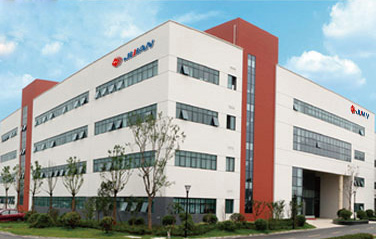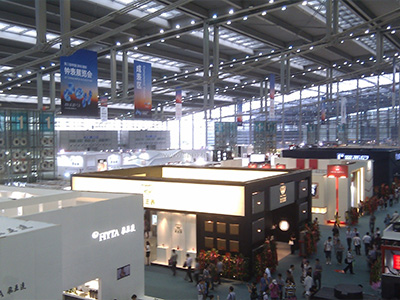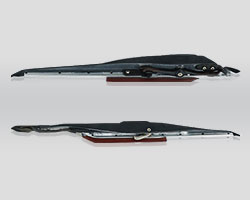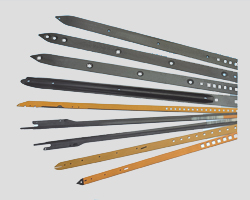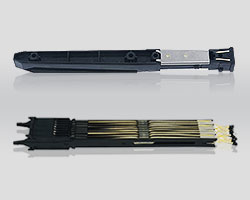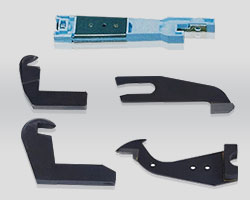Core tip: at present, China's economy to bid farewell to high growth, into the structural transformation, innovation driven new normal. In the new and old kinetic energy conversion stage, including the textile industry, the manufacturing sector faces greater difficulties and downward pressure.
At present, China's economy to bid farewell to high growth, into the structural transformation, innovation driven new normal. In the new and old kinetic energy conversion stage, including the textile industry, the manufacturing sector faces greater difficulties and downward pressure. In advancing the reform of the domestic innovation at the same time, free trade zone, Tianjin Integrated Test and other major top-level design have been introduced, especially the "The Belt and Road" which is a major strategic focus on long-term development has entered the stage of overall.
At present, the world economy as a whole is still in the post financial crisis era of the depth adjustment phase, but the performance of various countries have differentiated. U.S. economic recovery momentum, the EU, Japan, stagnation, Brazil, Russia, South Africa, a large number of emerging countries suffered a major setback for economic development, commodity prices in the doldrums, the exchange rate fluctuations. Embodied in:
One is in the background of global aggregate demand growth is lack of power, textile supply chain between the comparative advantage of competition is more intense, the textile and garment industry facing industrial workers a total shortage and the resources and environment constraints lead to increase the cost of rigidity of the practical difficulties. At the same time, domestic cotton policy has been improved, but the state reserve inventory and quality problem is still very prominent, the resulting uncertainty influence the stable operation of the whole industry chain. This series of factors led to the rise in the overall cost of the objective to weaken the international comparative advantage of China's textile industry.
Two is the global trade policy reform is a profound impact on the remodeling of the global textile supply chain, the regional trade agreement will cause a greater challenge to the healthy development of the industry. For example, China - ASEAN Free Trade Zone since 2010, after the completion of the promotion of China and ASEAN countries, the depth of the textile and garment industry chain integration, ASEAN has quickly become the third largest export market in japan. In addition, the European Union and Japan by adjusting the discount of country specific tariff policy, giving, Cambodia, Myanmar, Vietnam textile and apparel products zero tariff or preferential tariff treatment, accelerated international orders from China's transfer to the country.
Three is a new round of the global industrial revolution and the consumer revolution has shown signs of the beginning, China's textile industry to break the low end of the value chain of the situation and the task is very urgent. A new generation of information technology and production chain depth of integration, industrial robots and full intelligence to achieve the innovation and breakthrough, and large scale application and industrial organizational processes, industry competition and the global industrial competition facing a major adjustment.
Prospective industry research institute the Internet of China Textile machinery industry opportunities challenges and Strategies of special advisory report "data display: in 2014, China's manufacturing industry foreign direct investment to 19.33 billion, far more than the amount of earlier to attract foreign direct investment. As of the end of 2014, the domestic textile industry has been more than 100 countries and regions in the global investment to build more than 2600 textile and garment production, trade and product design companies, most of them distributed in asia. 2004 so far, about 200 domestic garment enterprises in Southeast Asia, the construction of the production plant.
In fact, the main trade and cost factors of the two factors.
First, the terms of trade
Part of the business is to respond to Europe and the United States and other countries some trade protection measures, such as Shen Zhou knitting group the factory is to invest in Cambodia in early 2005, breakthrough products "origin" restrictions, to avoid encounter anti-dumping or "special protection" possible; some enterprises is to circumvent trade barriers, such as put into operation in Turkey and Uruguay both Texhong Textile Group, in local direct organization of production and the completion of the sale, thus saving the customs of the two countries set up 30% of the high tariffs; and part of the enterprise is in order to enjoy the special trade policy, such as in 2011 the EU announced to the generalized system of preferences (GSP) implementation of the world's least developed countries, many Asian countries "standings famous." Therefore, if the export from China to Europe to pay 12% of the tariff, and exports from the country can enjoy duty-free concessions, which attracted a lot of domestic textile enterprises to invest and build factories in Southeast asia.
Two, cost
Labor cost. In textile industrial cluster in Jiangsu, Zhejiang, Fujian manufacturing employment average annual wage gains in, for example, the 2010 - 2013 three data were as high as 18%, 16%, 17%; in addition to the natural growth of wages, welfare spending in corporate welfare is due to the population of employment structure change significantly higher (staff accommodation, leisure and entertainment expenses). At the same time, the vocational education due to the lag of textile industry of skilled workers in short supply, so rising labor costs and recruitment difficult to become a reality.
Land cost. Most of the domestic textile enterprises are concentrated in the eastern provinces, with the increase in orders led to the expansion of production capacity, the new plant has become inevitable. However, the current land prices in the eastern region of China, has exceeded the scope of the enterprise can bear.
The cost of raw materials, mainly refers to the cost of cotton, it occupies the largest proportion of the cost of production of textile enterprises. From 2011 onwards, in order to increase farmers' income, our country take the large-scale acquisition of domestic cotton, also for imported cotton implementation of quota restrictions and collect up to 40% of the tariff, leading to a serious shortage of supply of high-quality cotton, domestic cotton prices for three consecutive years higher than the international market for more than 30%, and helped China's textile production costs rose sharply.
Other costs: tax costs, according to a rough calculation from the textile enterprise, with a common market price of less than 100 yuan, the clothes for example, including the IRS, local education surcharge, social security and water conservancy funds, tax up to 27.44%, which does not include the enterprises often face various administrative fees; environmental cost at present, China's energy-saving emission reduction situation is increasingly serious, the new version of "environmental protection law" to strengthen the corporate environmental responsibility, enhance the environmental cost of the enterprise; the cost of energy, textile production demand for electricity is larger, therefore become the focus of the content of cost accounting is the use of electricity, and the current domestic price high is an indisputable the fact that.
In order to deal with the above changes, more and more domestic textile enterprises to invest and build factories overseas, and Vietnam is becoming an important destination for Chinese enterprises overseas investment. Through the transfer of new production capacity, with the procurement, production and sales of globalization has greatly improved the operating efficiency of domestic enterprises.

 ENGLISH
ENGLISH CHINESE
CHINESE